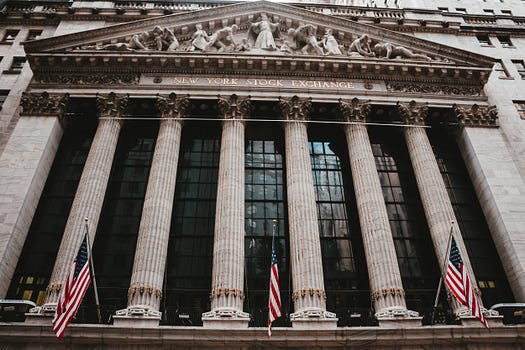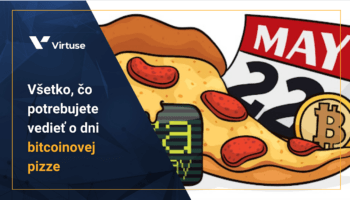Don’t forget why cryptocurrencies and crypto exchanges are here. They can play a crucial role in the distribution of the world’s wealth.
With reports of a drop in the overall market cap, weeks of uncertainty and polemics — it may come as no surprise that the investors are nervous.
It is understandable that there’s panic in the crypto markets.
That’s why we shouldn’t lose the sight of the wood for the trees in such a difficult period as the grass could be greener on the other side.
We just haven’t arrived there yet…
Inequality vs. equality
In this difficult period, we should remember why cryptocurrencies are here.
The current world as inequalities when it comes to wealth distribution.
Did you know that 1% of the richest people in the world make up 82 % of the world’s wealth?
Then, it may come as no surprise to hear today that 89.9% of the world’s financial assets are not available to U.S. citizens.
That’s because they’re not deemed “accredited investors,” and must have a combined net worth of at least $1,000,000, or have an income of at least $200,000 each year.
If you happen to not fall into this bracket, then you’re left with fewer investment options. And, that’s only in the States — what about other countries?
Whilst blockchain startups seek to disrupt and ‘uberize’ these rules, crypto exchanges can do much in this matter.
In addition to being a tool for the exchange of cryptocurrencies — they can also become a real place for the distribution of the world’s wealth.
Some Problems with Current Exchanges
Traditional future exchanges are expensive, too exclusive, and centralized.
These entities result in a ‘cartel-like’ consolidation of the sector. Did you know that 16 of the largest stock exchanges account for 87% of global market capitalization?
This presents problems for non-accredited investors.
For example, it is almost impossible for a regular investor or producer to become a member of a futures exchange trading with S&P, gold, oil.
Or, even more, exotic commodities like energies, soya beans or even electricity.
New cryptocurrencies and new types of crypto exchanges have the potential to change all of this by providing more investment options.
The advantages of tokenization
One of the solutions could be tokenization. It is the process of ‘converting rights’ of an asset into digital tokens via the blockchain which can then be tradable through smart contracts.
One of the biggest advantages of tokenization is that it allows for new economic models like fractional ownership.
Investors can own a certain percentage of an asset, which means that users can buy a more affordable piece rather than a costly whole.
This means that the investor no longer has to buy a brick or barrel of oil — and can decide freely to profit from its growth.
Or, on the contrary, reduce risk.
That’s because fractional ownership brings better risk diversification due to the ability to invest small amounts in each asset.
Here are some examples of good practice
There are several technical and legislative challenges that need to be addressed in order for the wider mainstream adoption of tokenization.
But it is only a matter of time until this happens. Here are some examples which show that the tokenization market is rapidly growing.
Tokenization in real estate
Many platforms like Propy, Real, Atlant, Rex are trying to reduce the costs and administration associated with renting — transferring and managing real estate via the blockchain.
Interestingly enough, some of the above mentioned have actually achieved a market cap of more than 20 million.
Tokenization of artwork
Artwork is tokenized by converting it into tamper-proof digital certificates — or ‘fractions’ through the Ethereum network.
In September, the Blockchain Platform Maecenas successfully tokenized a multi-million dollar artwork, and painting by Andy Warhol named ’14 Small Electric Chairs (1980).
Tokenization of gold
How does it work? Quite simple, physical gold is stored in a vault and the rights to it are divided into a certain number of tokens in unit price.
These are then sold to owners who can obtain it at fractional prices and profit from the growth of value. A good example of this is Novem, who has both an asset-backed gold token, and a utility token.
Tokenizing stocks
Company stocks are more complicated because in most jurisdictions it is prohibited to sell fractional parts of company shares. But some crypto pioneers are close.
For example, Morgan Creek announced tokenizing the shares of Anexio, a cloud storage firm based in Raleigh, North Carolina. Anexio plans to issue the tokenized shares with the aim of raising $40 million from the asset sale.
Tokenizing real-world assets
The next stage is building of one marketplace with a wide range of valuable tokens backed by underlying real-world assets. So individuals would have access to different asset classes to enable them to have a diversified investment portfolio.
Vrtuse Exchange tokenizes real-world assets and pairs them with like Bitcoin/Gold or Bitcoin/Oil. During phase 2, the exchange will bring in Digital Asset Collateralized Tokens (DACTs), which will directly link underlying liquid and tradable real assets.
The platform is able to purchase more underlying assets and, thus, create new coins for holding and trading. Some of the examples of the potential underlying assets are gold, oil, S&P 500, carbon, and other coins, as diverse as the global marketplace.








